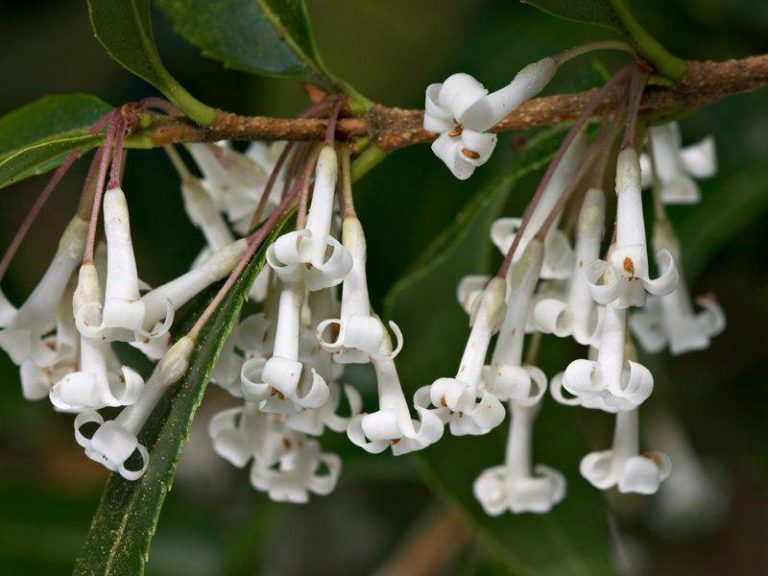
Osmanthus suavis
January was a bit of a sock in the jaw, wasn’t it? Every single flower that was open on January 10th (and there were plenty) was frozen solid by suppertime on the 11th. Let’s hope February doesn’t give us a repeat performance. Not to worry, though—UBC Botanical Garden has plenty of cold-hardy broad-leaved evergreens that roll with the punches.
When resilient shrubs come to mind, there are few tougher than the sweet olives and the aucubas. Both genera, Osmanthus and Aucuba, display oppositely-arranged stems and leaves, and produce berry-like drupes. A drupe is a fleshy fruit with a bony “stone” that encloses the seed (like cherries or plums). The sweet olives are mostly larger plants, but both are distinctly shrubby. Their flowers are, however, significantly different: fragrant, and often opulently-borne in the sweet olives, and unscented (some are malodorous), and often brown and inconspicuous in aucuba. Their biases regarding sun exposure are also marked, with most Osmanthus species requiring plenty of light to look their best. The inclusion of aucubas in this discussion might surprise some, given the downmarket reputation of Aucuba japonica (Japanese spotted laurel). However, this is a mostly unwarranted slight, and is due to the over-use of a few particularly garish variegated cultivars of that species. Aucubas are famously tolerant of dry, even heavy shade, and what would be considered for other plants, crippling drought. Thus, most of our aucubas are found in the shadier parts of the David C. Lam Asian Garden, often growing directly under large, established trees. Osmanthus, too, are somewhat drought tolerant but never to the same degree.
Osmanthus yunnanensis (Yunnan sweet olive), which is visible off the west side of the boardwalk, is a densely shrubby, ultimately arborescent (tree-like) species from southwest China. The leathery leaves are unusually persistent and the species remarkably cold hardy, despite its low-elevation, southwestern Chinese provenance. An even larger, more wide spreading species is the western Asian Osmanthus decorus (laurel osmanthus). Most references give a size of 3 m tall for this handsome species. Ours, on Beer Trail immediately west of the Campbell Building, is about 5 m tall by nearly 10 m across. Not all of our sweet olives have such large leaves. The garden beds to the west and north of the Roseline Sturdy Amphitheatre hold several plants of winter interest, including some that, given suitable temperatures, flower in early to mid-winter. Osmanthus x fortunei (hybrid tea olive) is one, and noted for its deliciously apricot-scented blooms. These were, alas, frosted off while they were in full flight in January. An old hybrid cultivated in Japan, O. x fortunei was introduced to the Netherlands in 1856 by the German physician, naturalist and explorer Philipp Franz Balthasar von Siebold, and then to England in 1862 by the Scottish botanist and plant hunter Robert Fortune, for whom the shrub is named. Osmanthus suavis (sweet osmanthus) (on Maries Trail and where Flanagan Trail and Kingdon Ward Way intersect) is noteworthy for its small, coarsely serrated leaves and loose arborescent form, but mostly for its honey scented flowers in May (suavis means “sweet”). Our smallest-leaved sweet olive is Osmanthus delavayi (Delavay Trail near the Forest Amphitheatre). A mounding shrub, Delavay sweet olive produces tiny, exquisitely sweet, lemon-scented flowers all along its stems in May.
Aucuba species are easily recognized by their thick green stems and conspicuously, coarsely-toothed, but seldom leathery leaves. Despite my barely disguised disdain for variegation in general, I find the subtly-yellow-spotted Aucuba japonica ‘Variegata’ somehow acceptable where it thrives shaded, near the confluence of Rock and Staunton Trails. Nearby is the so-called willow-leaf aucuba, Aucuba japonica ‘Salicifolia’ (overhanging Rock Creek on Wilson Trail, west of the Moon Gate). Whereas the sweet olives have perfect flowers (they include both male and female parts), aucubas have separate male and female plants, and ‘Salicifolia’ is a female, green-leaved cultivar, the leaves long and very narrow (salici = willow + folia = leaf). Its bleached foliage indicates it would probably do better with even more shade. ‘Serratifolia’ is an exceptionally handsome, vigorous male cultivar with large (up to 25-cm-long), narrow, dark green leaves with coarsely serrated margins. An impressive specimen is located on Decaisne Trail south of where it intersects Beer Trail. Female Japanese aucubas like ‘Variegata’ and ‘Salicifolia’ produce sizeable, red, berry-like fruits in late summer, but usually only when a male is located nearby. The somewhat sun-tolerant cultivar ‘Rozannie’ (Stearn Trail) is a compact plant with broad, glossy, dark green leaves. Often considered a horticultural notch above the rest (it has a GPP designation, for example), it carries both male and female flowers on the same plant and is self-fruitful, regularly producing crops of the attractive berries, even when grown on its own. Aucuba japonica ‘Nana Rotundifolia’ (on Upper Asian Way, opposite Ludlow Trail) is a female cultivar with comparatively abbreviated, roundish leaves and a very dwarf stature. Further along Upper Asian Way above Meyer Glade is the rarely-cultivated Aucuba chinensis var. chinensis. With its dark green, vein-marked leaves, this species does not look at all like the other aucubas. Behind the Campbell Building there is another, larger, rather ungainly specimen of Aucuba chinensis with impressively large, leathery, dull green leaves (that they are the same species defies belief). Regardless of its name, it is situated alongside Sinopanax formosanus and Trochodendron aralioides (see January 2024 in the Garden) in a sea of evergreen epimediums—the subject of a future installment.
- Aucuba chinensis var. chinensis
- Aucuba chinensis var. chinensis
- Aucuba japonica ‘Nana Rotundifolia’
- Aucuba japonica ‘Nana Rotundifolia’
- Aucuba japonica ‘Salicifolia’
- Aucuba japonica ‘Salicifolia’
- Aucuba japonica ‘Salicifolia’
- Aucuba japonica ‘Serratifolia’
- Aucuba japonica ‘Variegata’
- Osmanthus x fortunei
- Osmanthus x fortunei
- Osmanthus decorus
- Osmanthus decorus
- Osmanthus suavis
- Osmanthus suavis
- Osmanthus suavis
- Osmanthus yunnanensis
- Osmanthus yunnanensis
- Aucuba japonica ‘Rozannie’
- Osmanthus delavayi
- Aucuba japonica ‘Serratifolia’
- Aucuba japonica ‘Salicifolia’
Submitted by: Douglas Justice, Associate Director, Horticulture and Collections


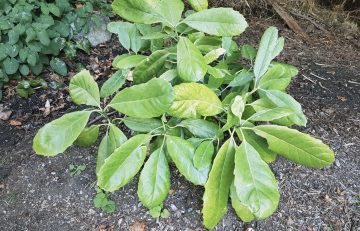
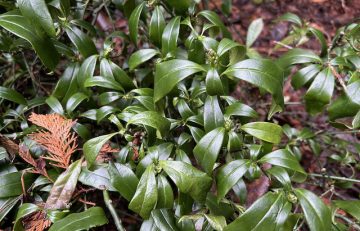

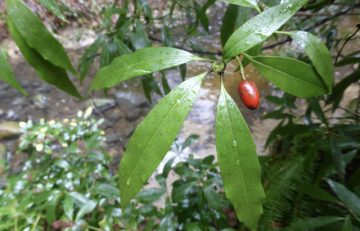
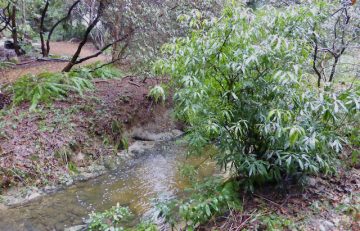
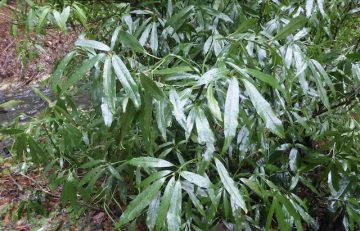
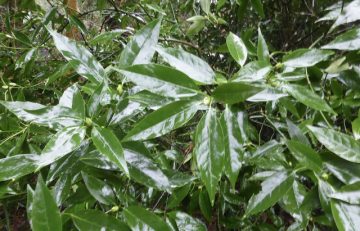

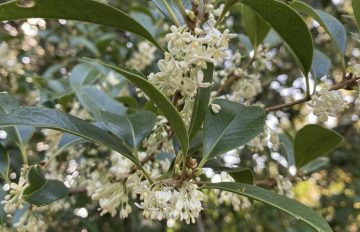



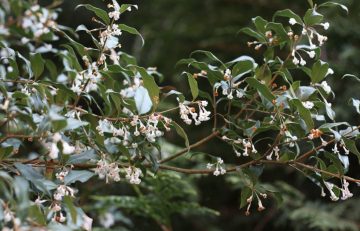
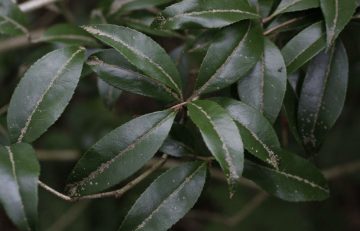

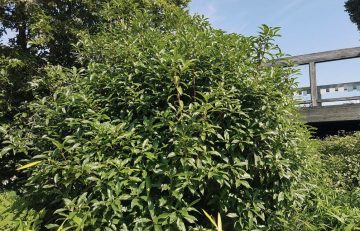

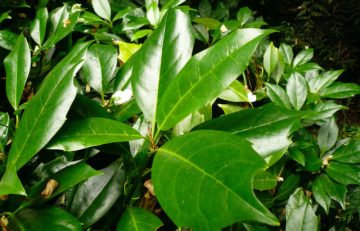


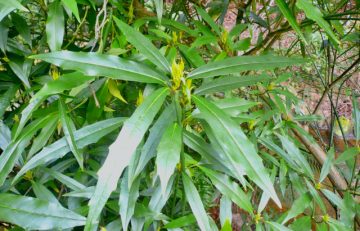
Great article!
My comment is awaiting ‘moderation’. What does that mean?
Thank you! I’m so pleased that you sent this page. I’m keen to learn more about the plants in the UBC Garden and the Van Dusen Garden. I was a member of both, but with Covid everything came to a halt, I’m afraid.
Now, I hope to be able to rejoin both Gardens and actually come to visit!
Thank you, again.
Yours truly,
Lois Hosein.